Every now and then, the overlords of the Internet decide to change things up in the digital marketing world.
And with how fast things change, it can sometimes be easy to miss a noteworthy tidbit of news.
One such tidbit recently came to light, and it’s definitely worth your attention.
Namely, Facebook has started taking steps to change the Organic Reach of pages on their platform.
And that has some implications for everyone.
It doesn’t matter if your Facebook Page shares memes, connects a community, or is a landing page for your brand.
You’re going to see some changes, and chances are they will come sooner rather than later.
To help cut through the clutter and keep a clear picture of the path ahead, I’m going to lay out what’s actually changing.
And at the end, we’ll give you some insightful ways to come out ahead.
Hopefully, you’ll be able to take action accordingly and still have a healthy Facebook presence.
But first, let’s talk a bit more about what Organic Reach actually is, and why it’s changing.
What is Facebook Organic Reach?
Organic Reach on Facebook is simply a measurement of how many people can find you on Facebook for free.
It’s much like organic rankings on a search engine, although in the case of Facebook it’s based on aspects like popularity, post frequency, and other contributing factors.
And when you think about the current state of Facebook, it seems logical that Facebook would be making some big changes.
With more and more content being generated and shared, plus with how the News Feeds curates the content you see, it’s natural that Facebook would need to fine-tune their system from time to time.
And so Facebook is making changes.
Specifically, they’re changing Organic Reach to look and feel a little more like the Paid Reach measurements.
The newer look really only changes a few minor elements, but the numbers will look bad nonetheless.
Previously, Facebook counted Organic Reach as any time an unpaid post appeared in someone’s News Feed.
Now, Organic Reach will only give you a hit if your unpaid post actually enters a person’s screen.
The changes don’t affect how your post is shown to anyone, nor does it really change anything about how posts are displayed at all.
It just affects how Organic Reach is tallied, but that makes a difference.
The seeming paradox then is that you can expect your Organic Search traffic to take a big hit, but that particular metric should be a lot more accurate.
According to Mark Zuckerberg, there’s a good reason for the death of Facebook’s Organic Reach:
“Recently we’ve gotten feedback from our community that public content — posts from businesses, brands, and media — is crowding out the personal moments that lead us to connect more with each other.”
He goes on to discuss how Facebook will be changing to mitigate this issue.
Specifically, Zuckerberg wants Facebook to be better geared to curate content that builds meaningful relationships.
And it’s worth mentioning that Zuckerberg himself lost about $3.3 billion because of this decision.
But what exactly is this “death” in terms anyone can understand?
More importantly for you, how might this affect your business?
To give you an idea, you have to look back a little bit.
Because as of June 2016, the Organic Reach of a Facebook Page had fallen to a mere 2%.
That’s a crazy drop from just four years prior, and Facebook and Zuckerberg still think that there’s too much Organic Reach for a Page.
So it’s pretty clear that if 2% reach is too much, we’re nearing the end of an era in terms of Organic Reach being the best viable option for spreading your brand on social media.
And the implication is pretty clear for business owners.
Your page is going to have less Organic Reach.
And with Reach dropping, you can fully expect that engagement is going to go with it.
So at this point, you’re probably wondering if there is any hope beyond the doomsday hype?
The answer is yes.
Because Organic Reach is not totally gone, and it probably won’t ever be.
The key here is to simply understand the changes taking place in the Organic Reach algorithms.
The consensus is that Facebook waging war against low-quality content, which means there are still avenues you can take that will help your Organic Reach.
You simply need a different strategy than saturation.
So now that you know what’s going on, let’s look at some ways you can use these changes to your advantage.
Tip #1: Focus on quality, not quantity
First and foremost, you need to understand that Facebook is changing to emphasize quality over quantity.
I’m going to repeat that for emphasis: Quality over quantity is the first place to start.
There’s been a long-running misconception that posting more or less on Facebook equates to more reach, but that’s as ludicrous as treating a “Like” as a useful metric.
You’re just making things worse for yourself if your goal is to post as frequently as possible, especially with the new changes.
And posting infrequently doesn’t do you any favors either.
Because the data points to a truth that couldn’t be further from a quantity-driven approach.
First of all, studies have shown that a moderate amount of posting seems to edge out posting too much or too little.
So when there are fewer posts, it becomes less likely that a post gets lost in your audience’s feed.
Which means your Organic Reach is going to do better with just a few, high-quality posts.
But don’t get carried away thinking high-quality posts can still be posted as often as possible.
Because the data still points in the opposite direction.
Buffer conducted some tests that help prove this point beyond any doubt.
They started by evaluating how many posts were being created per day on their Page.
As you can note, over the course of 2016 and into 2017 they say a fairly significant drop in how many times they posted.
To be precise, they were posting at half the peak rate by the middle of 2017.
And oddly enough, this trend helped them increase their Organic Reach:
They went from capping out with an Organic Reach of ~70,000 to a top reach of ~170,000.
That’s a 100,000 Reach spike that can be directly related to the frequency with which they posted on their Page.
And what’s more, they also saw a boost in direct engagement from this study as well:
This is a powerful illustration of how simply posting less and focusing on quality can improve your overall Organic performance on Facebook.
And this isn’t just a fluke.
It starts and ends with original and share-worthy content that will actually engage your audience.
Which means you need to focus less on pumping out content and focus more on crafting something that’s truly shareworthy.
You’ll see better Organic Reach, and you won’t regret it.
Tip #2: Know what your audience is looking for
A high-quality post isn’t just going to come from nowhere.
It starts with a more concerted effort to offer higher-quality content around your brand as a whole.
That means finding topics that are meaningful and then generating something that’s both shareworthy and relevant.
The more specifically targeted your approach, the better off you’ll be.
Small changes go a long way in improving quality, and the ultimate application is up to your unique brand.
The only way to truly know what “quality” means for your Page is to create some, test it, and then start making changes.
But that doesn’t mean you don’t have any other direction before you just start creating content.
One place you can start is simply by knowing which posts are right on Facebook, such as video.
Sharpie does a great job of creating interesting video that generates views and shares throughout their audience.
Here’s a recent example of one of their videos that partners Sharpie with NBA star Chris Paul:
Even if you can’t partner with a celebrity, you can use video to help boost your Organic Reach and increase engagement.
And success on Facebook through video isn’t just speculation either.
There are plenty of success stories, like this one from Audi:
Even in the highly competitive automotive industry, they were able to boost their lead generation by almost 12%.
And if that doesn’t convince you, I highly recommend you go check out more success stories.
It doesn’t even have to be long video either, as Facebook recently launched their own Boomerang application.
And whether you use video or not, just remember that high-performing and popular Facebook posts are a mixture of entertaining and educational.
Don’t mistake that as an either/or situation.
You need a mix of both if you want to succeed.
Most importantly, I recommend looking into what online audiences are actually consuming these days.
You might love creating and sharing your podcast for a blog post, but you’ll get more facetime with a sharp video or even just a simple photo.
And then there’s also the problem of engagement baiting, which Facebook has started to crack down on.
You might think it’s okay to ask for Likes, Shares, or “votes,” but the dark days of those posts are behind us.
Facebook now filters posts like these and gives them a lower priority than posts with more engaging content and imagery.
So all things considered, you have a lot to consider when you’re trying to pin down what your audience wants to see.
But if you put in the effort, you can develop a system that keeps your brand in the spotlight without dipping into your ad budget.
Tip #3: Consider your timing
You may have heard the news already, but there is such a thing as an “optimal time” when you’re posting to Facebook.
It just depends on a few essential elements.
The basics are pretty simple though.
Knowing when Facebook tends to be most active overall can help you time your posts accordingly.
Studies show that sharing at different times will affect Likes, Shares, and overall engagement statistics.
You can also try to take advantage of multiple spikes like this, but remember you want quality over quantity.
One or two posts per day will do just fine.
If you post at the right time, it’s more likely that your audience will actually be on to see your post.
That by itself could increase your Organic Reach and help you engage with your followers.
But keep in mind that performance can be industry specific as well, so do your homework before you simply start changing all of your posting times.
And once you check your own industry’s trends, make sure that the information you uncovered accurately matches your own audience by examining your own Facebook Page’s Insights tab.
Your goal here is to simply avoid posting at times when your audience is unlikely to see posts.
If there’s a verifiable time when engagement and Reach dips, you might not want to share your best content at those times.
And there are a lot more studies on this topic than just the ones above.
Kissmetrics has put together research that verifies the science of timing posts.
source https://blog.kissmetrics.com/is-facebook-organic-reach-dead/

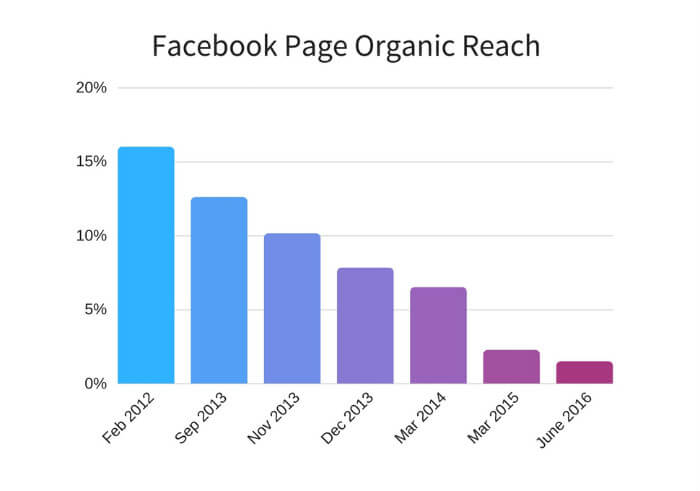
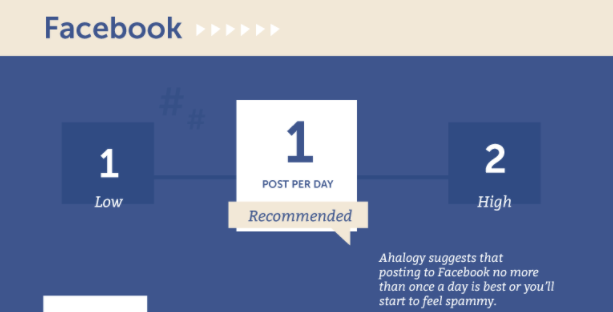
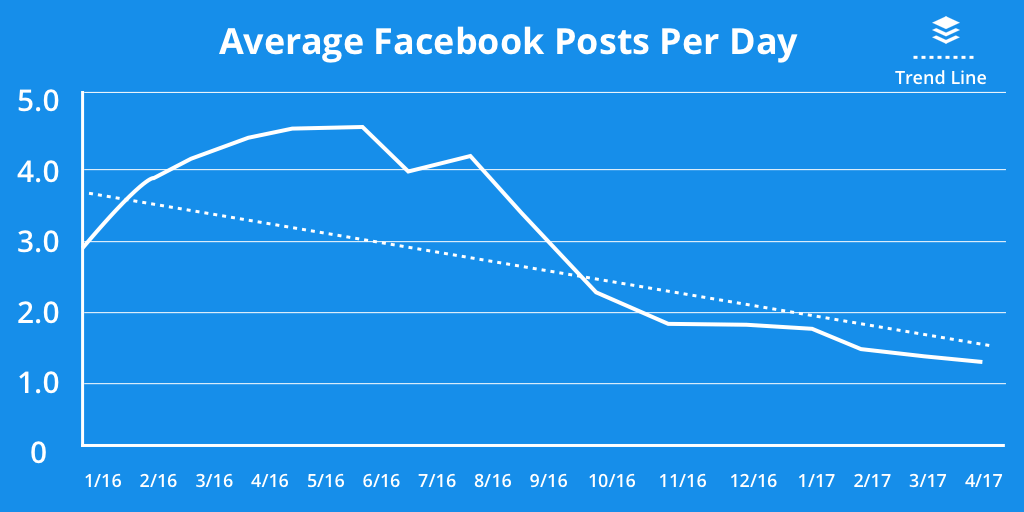
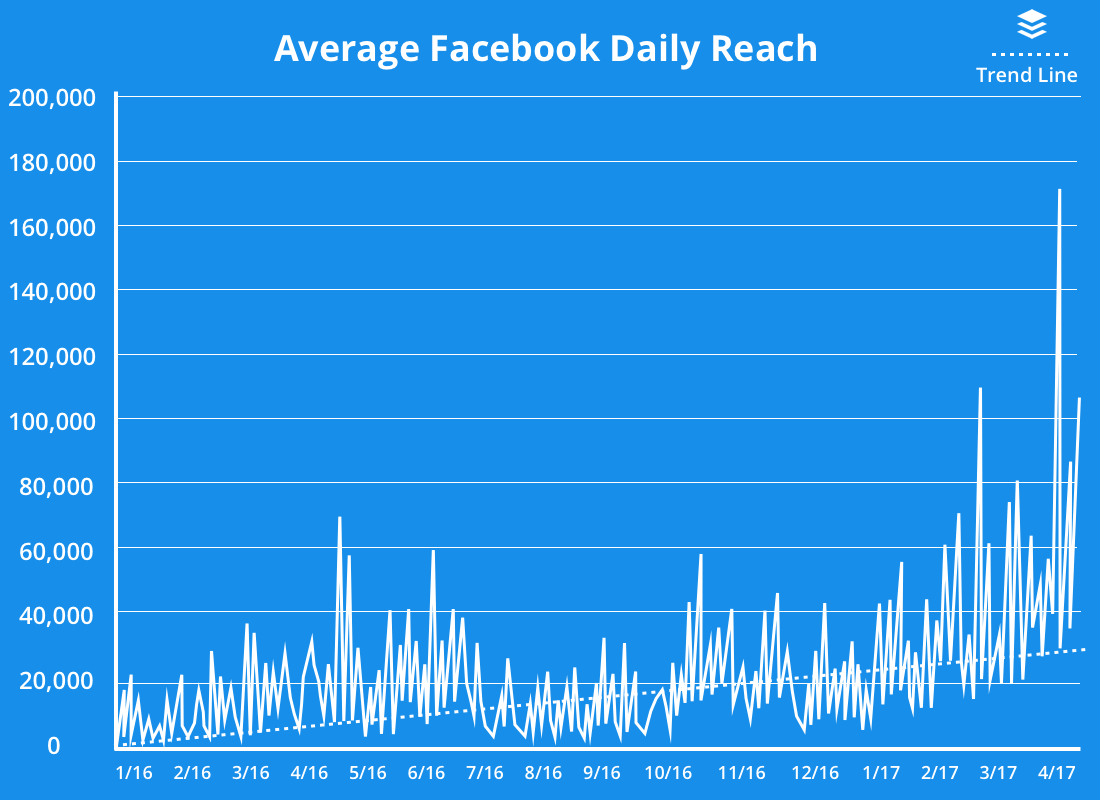
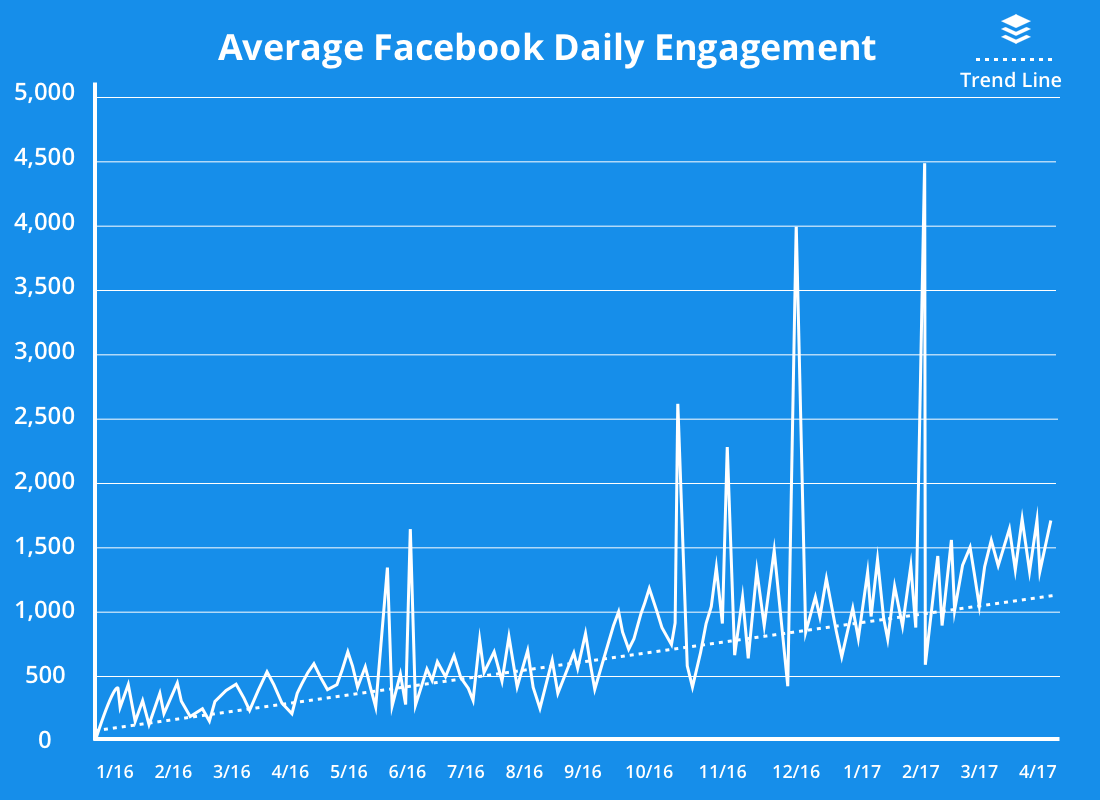
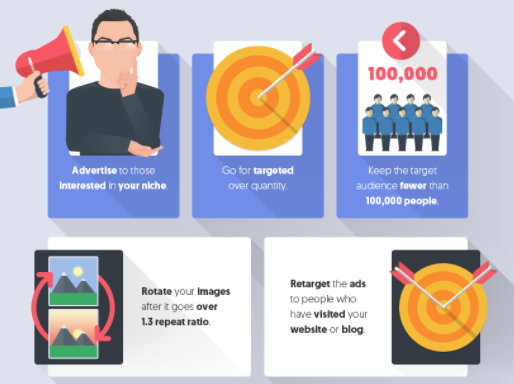

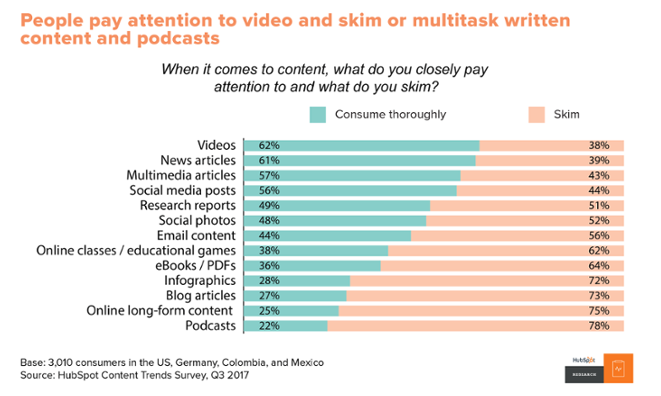
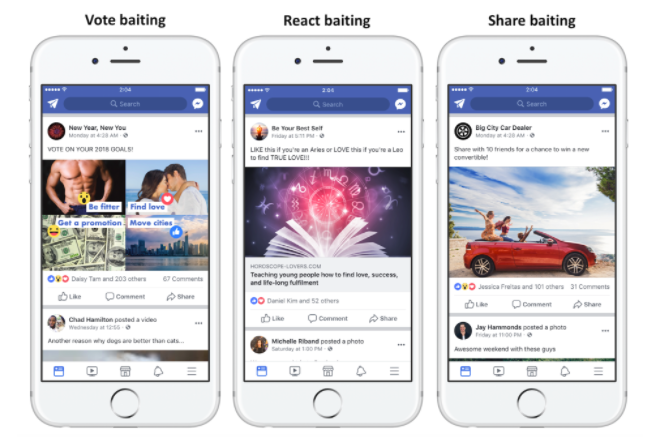
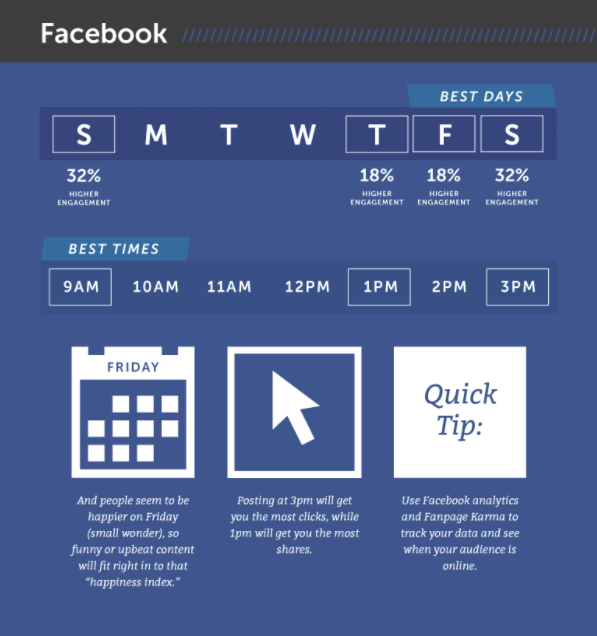
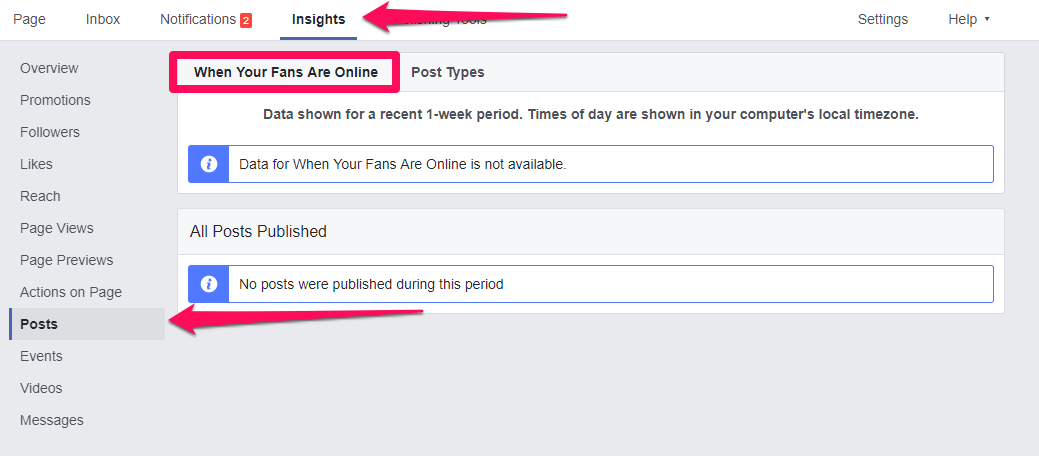
No comments:
Post a Comment